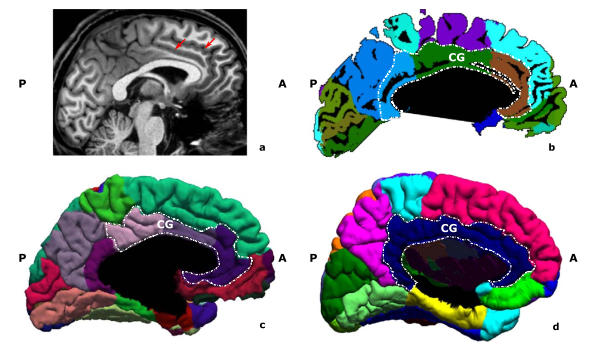Minimizing motion artefacts (maybe)
Motion traces for the respiratory oscillations
in EPI and SMS-EPI - a replication
My new(ish) MRI physicist guru (practiCal fMRI) recently blogged about motion in high resolution fMRI. In short, using SMS-EPI, we can get tiny voxels, which can be useful for investigating neural substrate of x, or in my case pre-surgical fMRI. The problem with tiny voxels is that tiny motion become visible too. Of course we have post-processing to help, but like everything else, it is better to control for as much as we can from the data - and here that means using some sort of restrain to prevent head motion.
In the following, I collected resting state data (120 volumes) on our newly delivered Siemens PRISMA. Data were processed by myself and Panagiotis Tsialios who is visiting the lab. Motion correction was computed using rigid body transform to generate motion traces. From that, I compute the displacement as the square root of the sum of square differences (get the derivative of each trace, square, sum and take the sqrt ; see https://github.com/CPernet/spmup/blob/master/spmup_plotmotion.m)
Subject 1
2D EPI PAT2 SMS2 - resolution 2.04 * 2.04 * 3.75 TR 1.5sec. Motion is not bad at all, with a mean displacement of 0.08.
2D EPI PAT2 SMS3 - resolution 1.48 * 1.48 * 1.5 TR 2.5sec. Again, motion is fine with a mean displacement of ~0.04 ; actually seems to work better since it's about half from the previous sequence.
2D EPI PAT2 SMS3 - resolution 1.48 * 1.48 * 1.5 TR 2.5sec. This is the same sequence but now using prescan normalization. Motion is not bad at all, with a mean displacement of ~0.036.
2D EPI PAT2 SMS3 - resolution 1.48 * 1.48 * 1.5 TR 2.5sec. This is the same sequence as above - except that before we used a vacuum bag on the subjects' chest that immobilises your neck and chin + padding at the top of the head. Now this is no vacuum bag, just the standard padding. Motion is quite similar, with a mean displacement of ~0.03.

What is very obvious here, is that increasing the resolution makes motion more apparent - the motion traces show that the subject is drifting more over time ; yet once computing the average displacement (mean of the scan to scan motion) we do not see big differences ; and really this is what matters most. Now of course, this was quite a good subject.
Subject 2
2D EPI PAT2 SMS3 - resolution 1.48 * 1.48 * 1.5 TR 2.5sec. As above, no restrain - but I also asked the subject to take a few deep breaths - as can be seen on the plot ! the mean displacement is now much higher 0.1.
On this video - check on the right side of the brain toward the back, how much those sulci are moving around.
When the same sequence is applied, but using the vacuum pack, we have much less motion - half way to subject 1 that did not take deep breaths with a mean displacement of 0.06.
Now those sulci stays much more in plane :-)
Conclusion
There are no mystery, good data comes from subjects that do not move much, and the higher the spatial resolution, the more we can see drift over time. The good news is that for a good subject, that doesn't seem to impact much scan-to-scan displacement that creates the artefacts. When there are stronger, fast(ish), motion like taking a big breath, motion is causing much more problems but it can be partly compensated by using restrain. Here we used lots of padding and the vacuum pack that is sold by Siemens to scan babies. We stuck this on the chest and neck, going under the chin. Once air is removed, this creates a sort of cushion that prevents mainly rolling (especially during swallowing). This is clearly not as good as custom made casts but it looks like it does a descent job.
Unanswered question: how much difference does that make to use prescan normalization for BOLD imaging - but see https://practicalfmri.blogspot.co.uk/2012/04/common-persistent-epi-artifacts-receive.html







Comments
Post a Comment